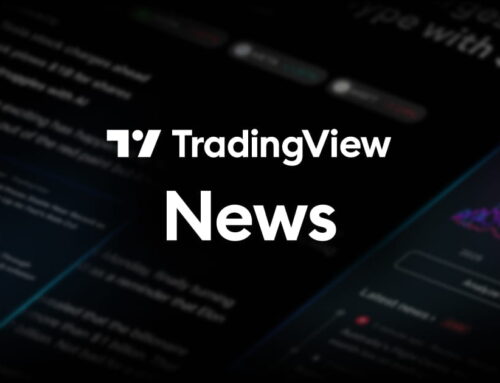Higher Market Volatility and Trading Volume Catalyze Robinhood Markets Stock (HOOD)
June 19, 2025
In This Article:
Robinhood Markets (HOOD) stock is undeniably popular right now, but this popularity means investors must be cautious about potential overvaluation. Despite these concerns, the company is doing remarkably well, and management has truly come into its own. With Robinhood’s brand evolving from a meme-stock retail investing app into a holistic financial platform for the masses, it’s difficult not to be bullish on HOOD in the long term. However, despite the bullish cheer, I’m taking a Neutral position on HOOD while awaiting better levels.
Robinhood stock is up by approximately 90% year-to-date and by about 230% over the past 12 months, which is impressive and significantly outperforms the broader market. Arguably, Robinhood is becoming more relevant than ever as artificial intelligence (AI) and automation gain momentum. Geopolitical uncertainty, greater volatility, and higher trading volumes are the fuel, while technology is the trigger for HOOD stock outperforming the S&P to the degree it has so far this year.
As automation increasingly replaces manual labor, investing and capital allocation are poised to become more accessible across all demographics, and Robinhood is well-positioned to lead this shift.
In its latest earnings report, Robinhood delivered impressive results: net income surged to $336 million, revenue grew 50% year-over-year, and net interest income accounted for 30% of total revenue. Assets Under Custody reached $255 billion, nearly doubling from the prior year. The company is effectively converting its 25.9 million funded users into recurring revenue through offerings like Robinhood Gold, which now boasts 3.2 million subscribers—a 90% year-over-year increase.
These robust financials help explain sustained investor confidence. While a short-term pullback may be on the horizon, I see it as temporary. With greater macroeconomic clarity expected in 2026, Robinhood appears poised for a continued upward trajectory.
In terms of earnings, HOOD reported that its income more than doubled to $336 million, up 114% from the prior year, delivering $0.37 per share.
Robinhood is actively expanding its platform and positioning itself at the forefront of financial innovation. The company recently launched Robinhood Cortex, an AI-powered market insight assistant that delivers real-time analytics and personalized trade ideas. Designed to boost user engagement, retention, and conversions to Robinhood Gold, Cortex adds a monetizable layer to the platform. AI integration will also enhance Robinhood Legend, the firm’s advanced trading platform designed to attract professional investors and broaden Robinhood’s total addressable market.
Robinhood has also made a bold move into crypto with its $200 million acquisition of Bitstamp, securing EU crypto licenses, expanding its international footprint, and onboarding over 500,000 funded accounts and 5,000 institutional clients. This marks a strategic shift into high-level M&A for a brand often seen as retail-focused.
High Yield Savings Offers
Powered by Money.com – Yahoo may earn commission from the links above.
International growth is another key focus, with Robinhood planning to launch a UK Stocks & Shares ISA, tapping into a market that draws £70–80 billion in annual subscriptions. This expansion positions Robinhood as a serious challenger to incumbents like Hargreaves Lansdown (HRGLF) and AJ Bell, laying the groundwork for broader European fintech expansion and global financial relevance.
To be a successful value investor, it’s essential to deeply understand both the industry and the specific risk profile of the company you’re investing in. While Robinhood has shown impressive growth—especially through international expansion—its revenue growth is likely to moderate in the medium term.
Currently, the stock trades at a price-to-sales ratio of 21, well above its five-year average of 7.5. Annual revenue growth has increased modestly from a five-year average of 52% to 60% year-over-year. Much of the recent bullish sentiment stems from improving profitability as the company starts to realize returns on its long-term investments. While valuation is partially driven by market sentiment, that only goes so far.
With shares trading well above both their 50-day and 200-day moving averages and an RSI near 70, Robinhood appears technically overbought. This doesn’t reflect poorly on the company’s fundamentals—it simply suggests that now may not be the ideal entry point. Great value investors wait for moments of weakness, not strength, to buy into quality names like Robinhood.
Wall Street currently rates Robinhood as a Moderate Buy, with 14 Buy ratings, five Holds, and one Sell. However, HOOD’s average stock price target of $62 suggests a potential 17% downside over the next 12 months. That aligns closely with my own assessment: Robinhood is a strong company with solid fundamentals, but current valuation levels make it an unfavorable entry point for new investors.
Robinhood is undoubtedly one of the most exciting companies on my radar at the moment. However, excitement doesn’t always equate to a wise buying opportunity. Ultimately, valuation reigns supreme—and at today’s levels, the stock appears overvalued.
I’m holding off until the market offers a more reasonable entry point. When the next significant pullback comes, I’ll likely be among the first to buy in. Patience is a cornerstone of successful investing, and in this case, it’s a principle I’m fully committed to.
Terms and Privacy Policy
Search
RECENT PRESS RELEASES
Related Post




